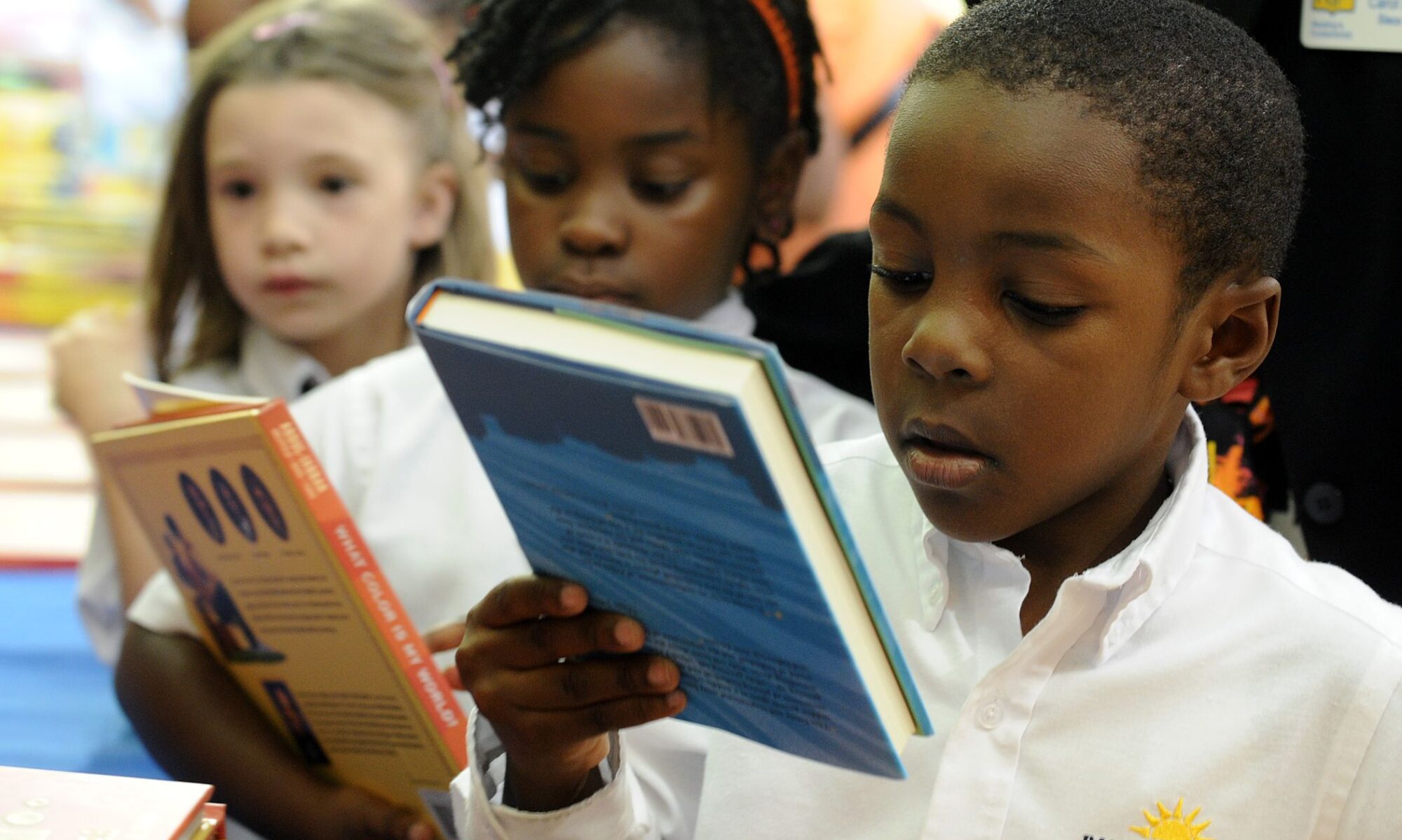Hispanic Heritage Month Activities

Source: Olivia Madrzyk
Table of Contents
Watch Disney’s Encanto
Play Lotería
Make Flan
Papel Picado
Machu Picchu Virtual Tour
Creating Paper Marigolds
Famous Hispanic Americans Activity
Puerto Rican Mask Art
Castanets Craft Activity
Jame Out to Lin Manuel Miranda’s Hamilton
Watch Disney’s Encanto
Ages: Grades K-12
Objective: Teach students about Colombian culture through this engaging and age-appropriate animated film! For older students, engage in a discussion about mental illness and culture.
Directions: Walt Disney Animation Studios’ “Encanto” tells the tale of an extraordinary family, the Madrigals, who live hidden in the mountains of Colombia, in a magical house. Have students learn a bit about Colombian culture. Encanto features some traditional Colombian music as well as traditional Colombian clothing and food! Watch Encanto on YouTube here. After the movie is over, form a discussion circle and ask students “what is a special gift that you think that you have?”. For older audiences, consider asking “have you ever felt pressure from your family or culture to “suck it up” when dealing with mental health issues? What are ways we can support each other when we are struggling with sadness, depression and anxiety?”
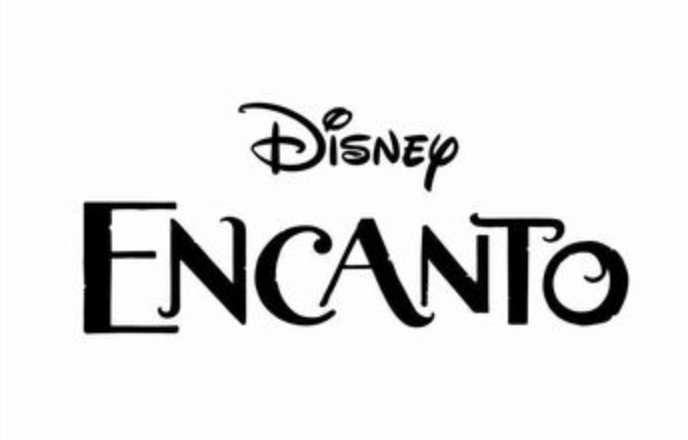
Source: https://www.sharonherald.com/lets-talk-about-bruno-lessons-from-disneys-encanto/article_a2a15014-71a7-11ec-a213-0fa9390b68dd.html
Play Lotería
Ages: Grades 1-12
Objective: Teach students about Lotería (meaning “lottery” in Spanish), a traditional Mexican game of chance similar to bingo, and have fun!
Directions: To learn how to play Lotería, watch this brief video here.
- Distribute Lotería boards to each student or student team.
- Decide on a pattern on the board that will be the winning pattern.
- Choose a “caller” who flips over the cards. The “caller” is supposed to be silly and distracting.
- Pass out beans (or any other counter available)
- Have the caller flip over one card at a time, calling them out.
- When students have a spot on their board that matched the card, they put a bean on it.
- When the winning pattern has been completed by a team, they shout “Lotería” and get a prize.
Play using traditional lotería cards and beans as chips for your card or play online!
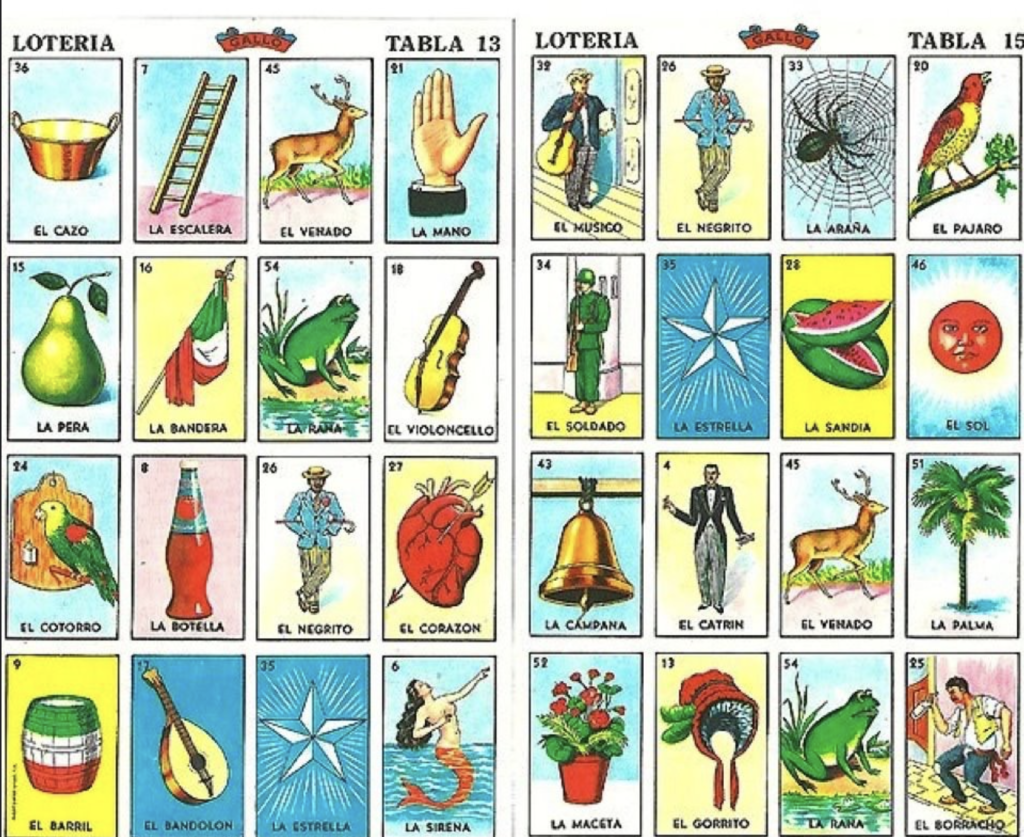
Source: https://www.syracuse.com/tech/2019/12/what-is-loteria-googles-doodle-invites-you-to-play-traditional-mexican-bingo-game.html#:~:text=A%20card%20is%20dealt%20from,version)%20and%20win%20the%20game
Make Flan
Flan is a Latin dessert that is a favorite from Puerto Rico, Mexico, to Costa Rica and beyond! Make this delicious 5 ingredient flan using Goya’s recipe! While eating flan, discuss the history of flan and how it’s become a favorite dessert across Latin countries!
Age: Grades 6-12
Objective: Learn about a traditional Latin dish and engage students in the creativity of cooking!
Directions:
-
Preheat the oven to 350 degrees F (175 degrees C).
-
Melt sugar in a medium saucepan over medium-low heat until liquefied and golden in color. Carefully pour hot syrup into a 9-inch round glass baking dish, turning the dish to evenly coat the bottom and sides; set aside.
-
Beat eggs in a large bowl. Add condensed milk, evaporated milk, and vanilla; beat until smooth. Pour egg mixture into the baking dish; cover with aluminum foil.
-
Bake in preheated oven for 1 hour. Let cool completely.
-
To serve, carefully invert onto a rimmed serving plate; let caramel sauce flow over flan.
Ingredients:
- 1 cup white sugar
- 3 large eggs
- 1 (14 ounce) can sweetened condensed milk
- 1 (12 fluid ounce) can evaporated milk
- 1 tablespoon vanilla extract
Extra time? To teach students about the history of the dish, click here.

Source: https://www.allrecipes.com/recipe/20979/spanish-flan/
Papel Picado
Papel Picado (“pecked paper” in English) is a traditional Mexican craft where one cuts elaborate designs into sheets of tissue paper. Papel Picado is considered a Mexican folk art and is used for decorative purposes. Papel Picado is commonly displayed on special occasions such as Easter, Christmas, and Day of the Dead, as well as weddings and quinceañeras.
Ages: Grades K-12
Objectives: Help students embrace their creative side and create Papel Picado to learn about Mexican celebrations!
Directions:
- Fold a piece of tissue paper (lengthwise) in half and then in half again. Make sure one side consists only of folds.
- Fold the long folded sheet in half. Mark a dot in the corner that is made up of folds. This helps the children recognize where not to cut.
- Just like cutting a snowflake, cut shapes along all four sides avoiding the area with the dot.
- To cut a shape from the middle of the rectangle, fold the paper in half again, and cut a shape into the fold.
- Unfold carefully and tape tissue paper to a long string of yarn.
- To make multiple panels from one cut, layer 2-3 sheets of tissue paper together add tape (carefully) while cutting.
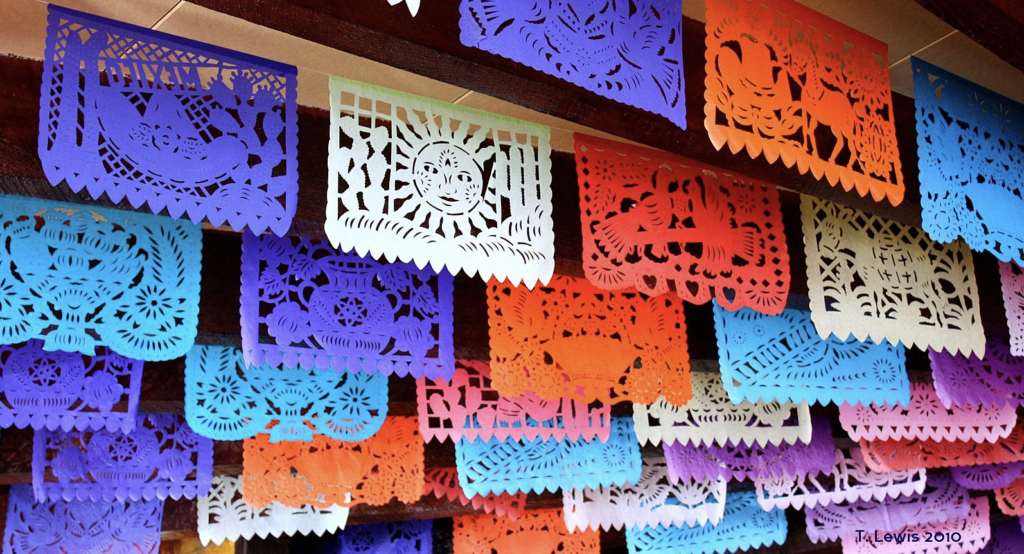
Source: https://www.deepspacesparkle.com/how-to-make-a-papel-picado/
Machu Picchu Vitual Tour
Machu Picchu is a 15th-century Inca citadel located in the Eastern Cordillera of southern Peru. It is a very well-known and sacred ancient Incan site. Virtually explore Machu Pichu in Peru with a guided 360-degree (and audio) tour that grants viewers access to areas closed off to in-person visitors.
Ages: Grades 6-12
Objective: To expand student knowledge of Indigenous Latine communities through a virtual tour of Machu Picchu!
Directions: Explain to students that in southern Peru, there is a large ancient monument from the 1400s. The monument, called Machu Picchu, was created by the Inca people, a cultural group Indigenous to southern Peru. The Inca people had a complex civilization, with impressive engineering, a postal service, and advanced medicine.
Then, on a projector, visit this Machu Pichu Virtual Experience and explore the cultural site with students. Ask students which direction they want to go and what surprised them about the Indigenous site.

Source: https://museumfacts.co.uk/the-incas/ and https://www.youvisit.com/tour/machupicchu?pl=f
Making Paper Marigolds
Flowers play an important role in many celebrations, from births to funerals they help us express our feelings toward people we care about. For Day of the Dead, the colorful petals of cempasúchil (marigold flowers) are used. The fragrance of bright orange and yellow marigolds is said to lead souls from their burial places to their homes. The cheerful hues add to the celebratory nature of the holiday, which, although it’s wrapped up in death, is not somber but festive.
Ages: Grades 5-12
Objective: Teach students about the intersection of art, expression, and culture with this marigolds craft activity!
Directions:
1: “Fold your paper in half and cut it into two sheets. Fold each piece in half again and cut in half – keep repeating this until you are left with eight pieces of tissue paper all the same size.
2: You will need four sheets of tissue paper for each flower so place your paper into stacks of four. Fold the paper into an accordion shape, by making a small pleat, then turning it over and making another pleat of equal size on the other side. Continue until the paper has been folded up into one strip.
3: Carefully cut a curve or a point out of one end of the top of your strip to create the petal shape.
4: Wrap a pipe cleaner around the centre of the strip to create the stem. Secure it by wrapping it tightly and twisting the end around itself. It doesn’t need to be too neat as once your fluff out your petals it will be hidden.
5: Finally, you need to fan out your petals to make your DIY paper flower. Carefully separate the top layer of your paper from the other layers and fluff it out to create the top petals. Repeat this step with each layer of paper, and when finished give the paper flowers a final fluff so there are no bare spots.”

Source: Priti Sharma
Source: https://kidadl.com/home/make-paper-marigolds
Famous Hispanic Americans Activity
Age: Grades 5-8
Objective: Teach students about Hispanic American role models and have fun with arts & crafts!
Directions:
- Print out coloring pages featuring Famous Hispanic Americans! Click here for coloring sheets.
- Hand them out to students and hand students an index card. Have students color the coloring page they received and have them do some research on the figure they got.
- Students should have 3-4 bullet points with important facts about their respective figures.
- After students are done, have them staple or tape their index cards at the bottom of the page and have students present their figures to each other.

Source: Spanish Mama
Source: https://www.education.com/slideshow/hispanic-americans/
Puerto Rican Mask Art
A vejigante is a common folkloric character seen in Puerto Rico during Carnaval, Santiago (St James) saint day, and other festival celebrations. The characters march in parades wearing colorful and ornate masks and costumes with bat wings. In this activity, students will get a glimpse of Puerto Rican culture by creating their own vejigante masks!
Ages: Grades 4-12
Objective: Teach students about traditional Puerto Rican culture and get their creative juices flowing by creating Vejigante masks!
Directions:
- “First, each child should get a mask. They can roll up newspaper like ice cream cones and glue it to the mask to make horns, fangs, beaks, etc.
- Next, make the papier-mâché glue recipe. Rip the newspaper into small strips. Dip the newspaper into the paste and cover the entire mask, including the additional horns.
- Leave to dry overnight (in humid weather they might take longer).
- Finally, paint them with the tempura paint!”
- Extra time? Read the picture book, Vejigante Masquerador, for younger groups. Buy the book here.
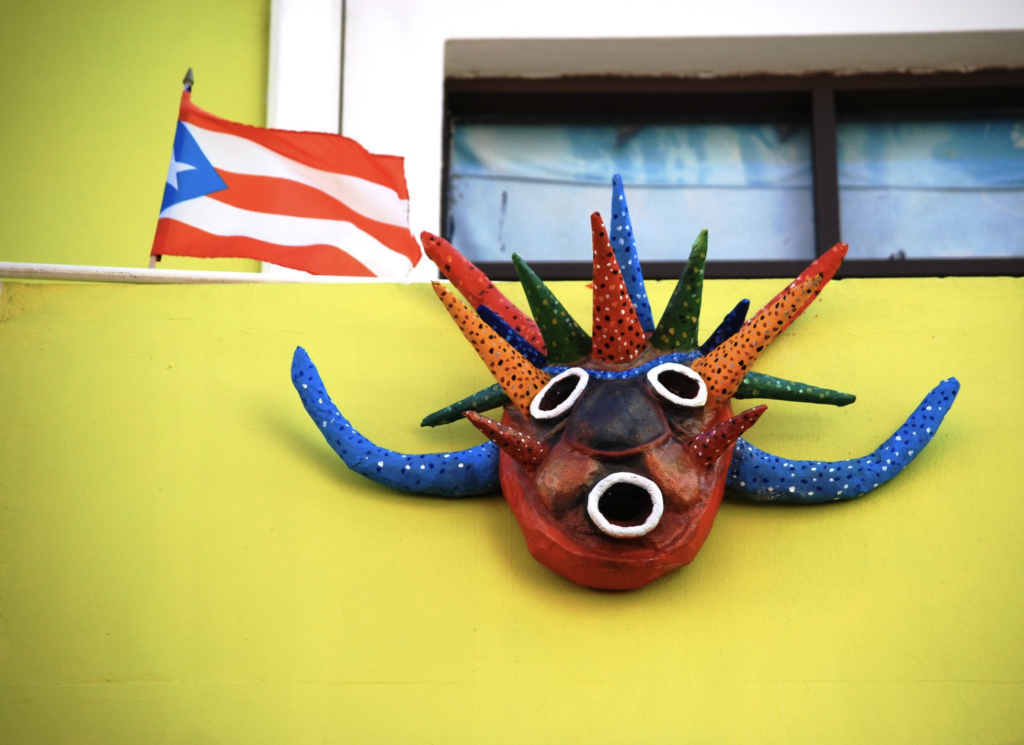
Source: https://kidworldcitizen.org/puerto-rican-mask-art-project-vejigante/
Make Your Own Castanets
Castanets are a percussion instrument that is a landmark in Flamenco, a Spanish art form. They’re usually held in the hand and struck together, making a distinctive “clack-clack-clack” sound. These DIY castanets are easy to make, and students will have fun jazzing them up with their own designs.
Age: K-7
Objective: Teach students about traditional Spanish music while engaging students’ artistic side!
Directions:
-
- Cut out a small piece of cardboard that is 6 ½-inches long and 1 inch wide.
- Paint one side of the cardboard in the color of your choice. Let it dry.
- Once it dries, add details like stripes, dots, wiggly lines, etc. Be creative, and make your castanet as unique as possible
- Fold the cardboard in the middle and flip it over to the unpainted side.
- Apply glue to the bottom ridges of the bottle tops and stick one on each end of the cardboard. Make sure they align and touch when the cardboard is folded.
- Flip the cardboard back to the painted side and glue the wiggly eyes to one end. Let the glue dry completely.
- Once it dries, put on some traditional Flamenco tunes and click away!
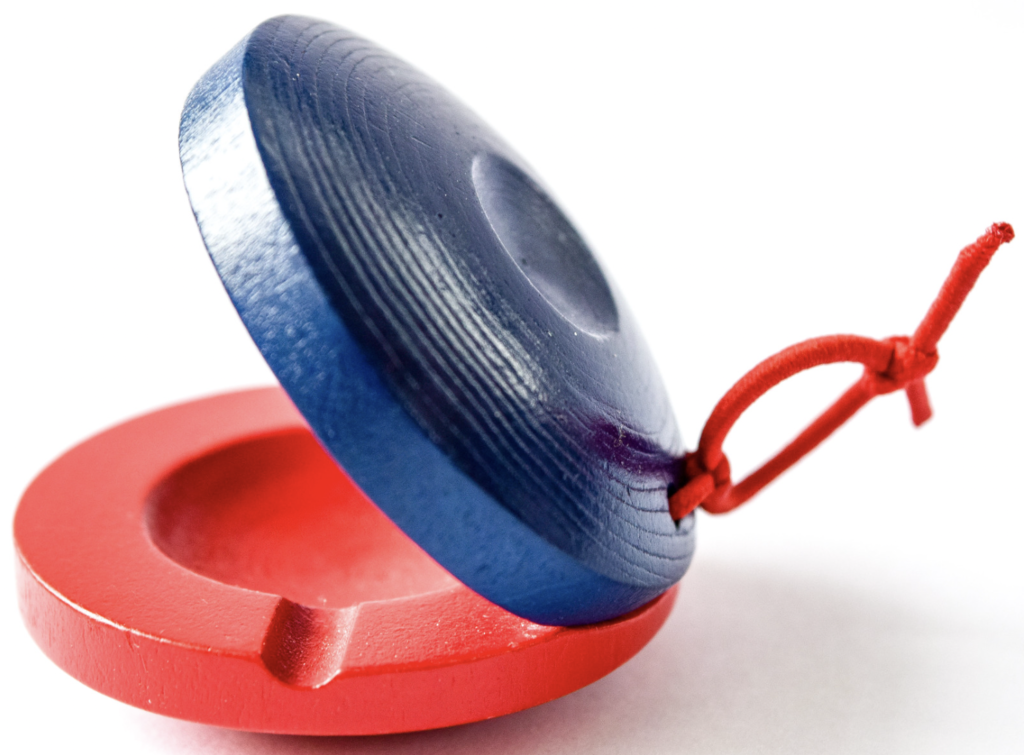
Jam Out to Lin Manuel Miranda’s Hamilton Soundtrack
Age: K-12
Objective: Blend historical education, music, and Hispanic Heritage by listening to Puerto Rican musician and playwright Lin Manuel Miranda’s famous Hamilton soundtrack.
Directions:
- During any non-instructive time, tell students you will be playing Lin Manuel Miranda’s Hamilton soundtrack.
- Make sure to set the context: Each song provides historical information about the life of Alexander Hamilton, one of the United States’ founding fathers.
- State that the soundtrack and famous play that goes with it is written by Lin Manuel Miranda, who originates from Puerto Rico and went to college in Connecticut.
- Play the soundtrack here!
- Additional idea: Invite students to choose a song and create a singing or dancing routine to accompany it. Then, at the end of the week, ask students to perform their act in front of the group!

Source: https://open.spotify.com/album/1kCHru7uhxBUdzkm4gzRQc
